 In an exclusive interview in the January issue of Sound on Sound magazine, engineer Chris Messina (left in the picture above) and mixer Zach Hanson gave the inside story of the making of Bon Iver’s 22, A Million, thereby finally revealing what countless people have been wondering: how did they create the many wild and crazy sounds that feature on the album? And what is ‘The Messina’? And ‘The Janette’? And what do these weird credits mean?
In an exclusive interview in the January issue of Sound on Sound magazine, engineer Chris Messina (left in the picture above) and mixer Zach Hanson gave the inside story of the making of Bon Iver’s 22, A Million, thereby finally revealing what countless people have been wondering: how did they create the many wild and crazy sounds that feature on the album? And what is ‘The Messina’? And ‘The Janette’? And what do these weird credits mean?
Below additional photos and screen shots that were not published in Sound on Sound. In addition, there was no space in the magazine for Zach Hanson’s descriptions of the mix of the second single from the album “33_God_”. So they follow below, very loosely edited, and not really placed in a narrative framework. If you want to have deeper understanding of the context in which Hanson worked, and entire the story of how the album came into being, please read my article in Sound on Sound.
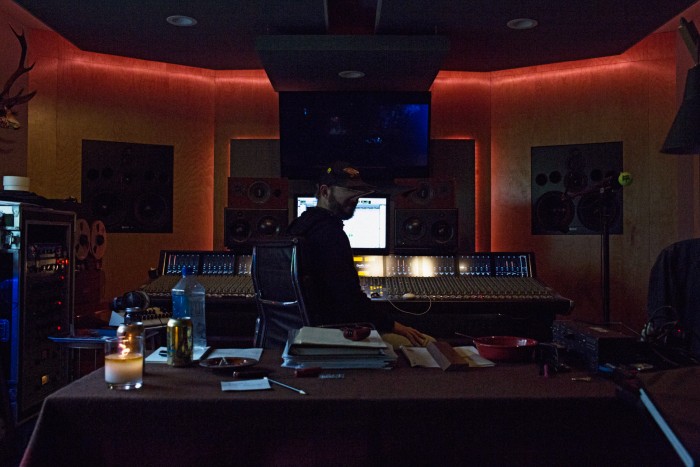
Justin Vernon in April Base Studio B, with his face obscured as he did not want it showing in any publicity for 22, A Million. Photo by Cameron Wittig
Zach Hanson: “I first entered April Base studio to mix the album in Studio B in May 2016. During the first week I created a skeleton, a shape, a mannequin for the songs. After that I went on tour with The Tallest Man On Earth, and, to continue the weird metaphor, while I was away Justin and the others carried on with putting clothes on the mannequin, rewriting lyrics, adding vocals and so on.”
“For the most part the adjustments that I made in the first week stuck around. Nobody tweaked them too much, and if there were tweaks they would be relatively minor things, like adding a little bit more punch or a low end to the drums in ‘33_God_. My job when I came back later was more scientific. I was like a translator for Justin. He’d say ‘this needs to be a little bit pokier,’ and I’d boost 700Hz or something.”
“Mixing this song wasn’t terribly different from the other songs, but right from the beginning it helped us pick the roles the instruments and sounds played by sending them through buses A, B or C on the SSL Duality desk I was working on in Studio B. The vocals went into Mix B, all the chordal stuff in Mix A, so on this song that mainly were the keyboards, and there’s also some banjo and some ambient stuff, like that wash at the end. The drums all went to Bus C. So we could treat those things separately as a group.”
“We had the drums going through the Slate Pro Audio Dragon compressor, and then into a Neve 2254a vintage stereo compressor to warm up the saturation of the Slate, and then back into Pro Tools. In general we did not do a whole lot of treatments to Mix A or B. On one song we used a Tube-Tech Multiband compressor on Mix B to tonally shape and calm certain parts of Justin’s voice when it builds up. The SSL bus compressor was our biggest friend on every song, it was the only thing we had on the mix bus.”
“The drums and bass had been tracked at April Base, using a combination of just a few microphones, or just one microphone, and recording them into Pro Tools. We panned Sean [Carey] on one side and Matt [McCaughan] on the other. We also sent the drums out to tape for a little gnarly saturation, and then brought them back into Pro Tools. Because they are each panned to the outside there is a kind of ping-pong-like effect of the drums playing off each other.”
“The ‘uh-oh’ rhythm effect that pans left and right was created by one of the band members, Andrew Fitzpatrick, who had something called The Box, which started out as one of the isorooms in Studio A and Andy set up his own little control room in there in which he did things with modular synthesis, and with the OP1. He came up with cool things like that. It is one of many things that take you out of the organic nature of everything for a moment, and that was one of his roles in the making of this record, coming up with weird little glitschy things like that.”
“In the ‘God’ mix windows screen shots you can see the two blue or purple tracks that say ‘drums tape,’ and in some instances those faders are a pretty high, so we are deliberately saturating them, even digitally, to get artefacts out of that sound that are just different. It is all very intentional saturation, and helps make it sound very contemporary.”
“We recorded some of the vocal sections during the drop section where the drums come in, by tuning the Isochrone Trinity Master Clock down just a few cts, so Justin could sing in a little bit of a higher range, without it sounding harsh on his voice or unnatural, and then when we brought it back up. This changed the formant of his voice slightly, making it sound more feminine. But he’s still singing really masculine, so it sounds like Justin’s voice, but at the same time a little bit pitched up.”
“These screen shots really demonstrate Justin’s workflow. When he is creative it is very easy for him to move forward very quickly. He’ll create dozens of tracks very quickly, recording another layer upon layer, and sometimes duplicating tracks. That plays a huge role in how he writes and arranges songs. He will sit down with an SM7 in front of him and sing one line in one section of the song, and then he will duplicate that track, and sing another line. He will do that throughout different sections of the song. In some of these songs he ended up with 40 tracks of vocals, in blocks of six vocals in one section of a song, and eight vocal tracks in another part of the song. In ‘33’ there are tons of big blocks of piano, layer upon layer of layer. That’s how he develops the sound that he wants to hear.”
“You can see all the dozens of piano tracks further down. All of them go to outputs are 29-30, which is the routing from Pro Tools to the desk. If you solo them and listen to them they will be really similar sounding but they are played either on a different piano, or at a different range, with different dynamics, and they all make of the one piano sound that you hear throughout the song. I wonder whether Justin had the intention at some point of treating these many piano tracks differently, but this is how it was when I came to them for the mix. It reinforces the fact that I did not spend much time in the Pro Tools, but instead had my head down at the board, tweaking knobs, making sure things were sitting in their appropriate places. If I looked at the session itself, I might have gotten discouraged or overwhelmed just seeing that many pianos!”
“Pedit1 at the top of the session is a piano edit, probably a little snippet from the middle of the song, the quiet verse with the twinkling of pianos. FindGod is a sample that came in from the OP1. The Cymbals are from one of the jams. Like I said, a lot of the songs come from jams that they had done over the course of a few years. Justin had brought in another originally mid-Western musician who plays in a band Megaphone, percussionist Joe Westerlund, who took an OP1 and sampled the sound of scraping the tip of a stick along a cymbal, which gets it to sing. He then played that at different pitches, which is what you hear at the beginning of the song.”
“The four sample tracks have lots of EQ1. All that stuff is going to be either high pass, or a low pass, or a notch somewhere, if there was a gnarly frequency in there. The EQ1 is something that I go to, because it is such an easy EQ, and it is pretty musical with relatively low CPU usage. A lot of those samples ended up having a lot of low end or high end and noise, with lots of background noise. There’s an EMT140 plugin on one of those. If you put it in a different space, or you wet it up a little bit, it tends to hide or mask the noise that samples can have a lot of the time. Those four tracks, and the IMSUN are the samples. The latter has a Time Adjuster on it, because when it was placed in the session it was aggressively ahead of the beat, so we delayed that a little bit. The Lo-fi on it comes in handy to grit things up and also used its lo-pass feature, which is very musical.”
“Six of the saxes tracks have the Little Altar Boy. That is such an interesting and creative tool for changing the formant, and it has pitch shift capabilities up to 1 octave above or below the original. You can change the masculinity of how something sounds, and those saxophones are very dark, and they come in and build right before the drop, and by turning the formant down with that plug-in I created something that almost sounds like saturation, but that makes it a little bit tougher sounding. The saxophones all go to channels 11-12 on the desk, where we processed them even more. I assume we also sent it out to some outboard effects. Other than that there would be hi-pass or lo-pass EQs, or little notch filters on the saxes.”
“M1 is the Korg M1, which again has three EQ3 1’s. I find that when you use two of those instead of one EQ with two bands you get a more musical sound. I think it’s because there’s less phase distortion. Often when you notch something out, you create another notch elsewhere. When I use the EQ3 I often find that it does not happen, or if it does happen it is not as present. To me it is more musical. OGNL is the Organelle, made by a company called Critter and Guitari. In this instance, I believe it was just a keyboard patch, similar to the M1, maybe a little more granulated.”
“OP1 snare, marching drums and Tape Mono all appear in the drop of the song. The drums tape track that you’re seeing there is the two drum sets, recorded back from tape onto one stereo drum track. The original drum recordings probably are also somewhere in there, if you look to the track list on the left, there are hundreds of tracks, many of them hidden. Tune kicks has the MoogFilter and Decapitator, and then there are three bass tracks, which are all Prophet basses. One track has the LittleLabs IBP phase alignment tool. Godsharmony are four tracks that are Sharon van Etten’s sample. The pianos are below this, and below that Justin’s vocals.”
“The reverb wash at the end was a sampled choir from The Staves, played and sped up in the OP1. The reverb wash came from several outboard reverbs. I think it ran through the spring reverb, as well as a Bricasti, probably on a bathhouse setting to get a cavernous sound, and we also used a TC Electronics 1210 Spatial Expander.”
© 2017 Paul Tingen
Below are all screen shots supplied by Chris Messina for the songs “10 (Death Breast)” and “33_God_” in one handy zip file, plus all screen shots for “10 (Death Breast)” for easy in-line viewing.


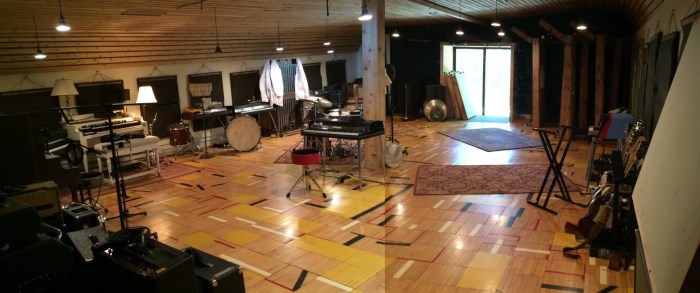
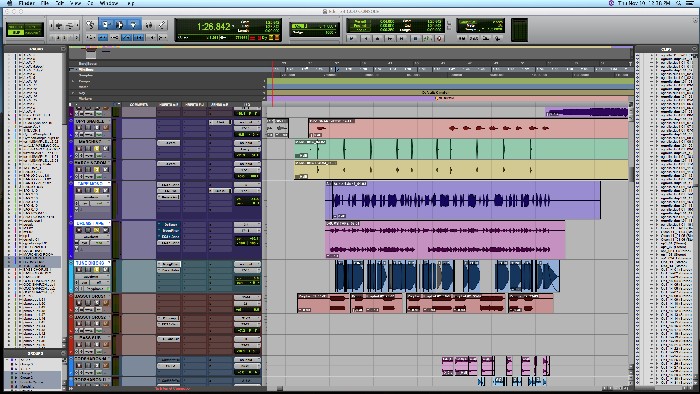


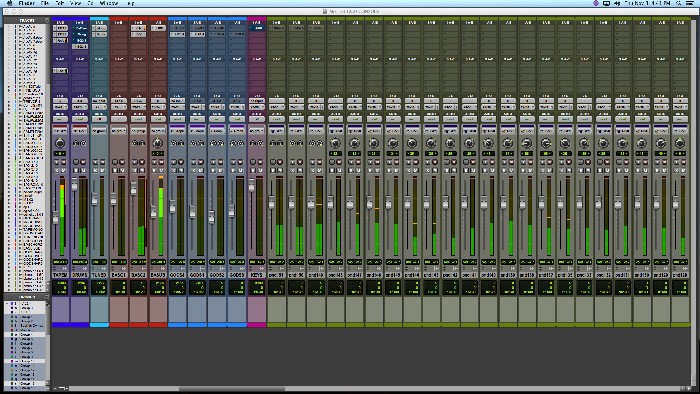
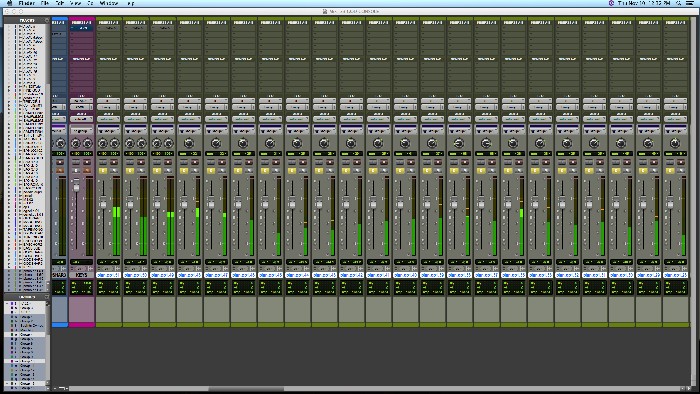
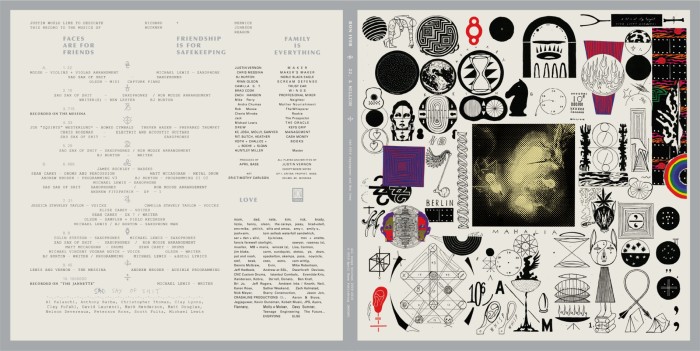

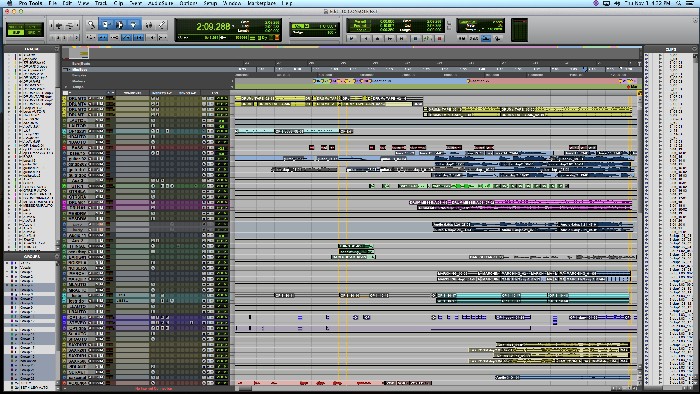

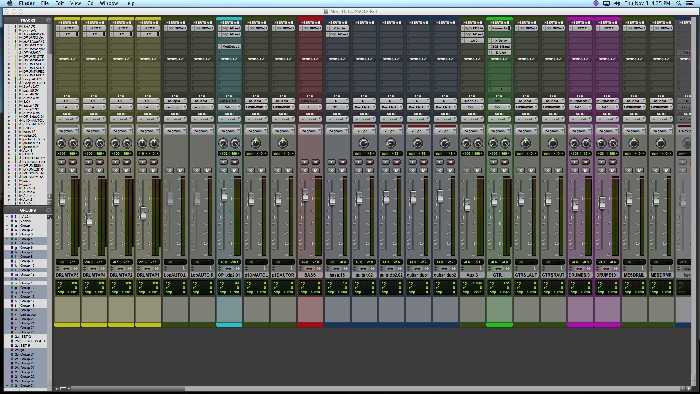
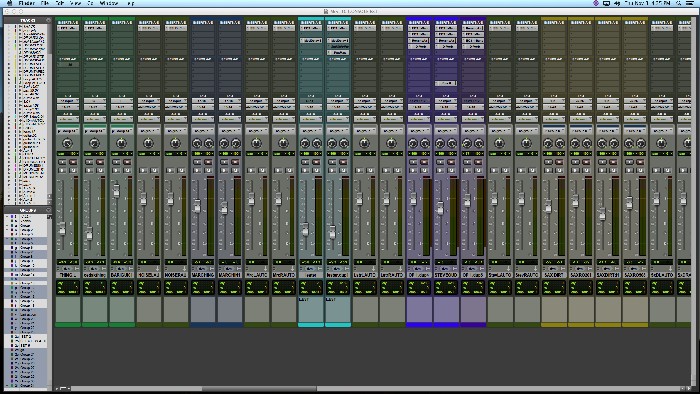
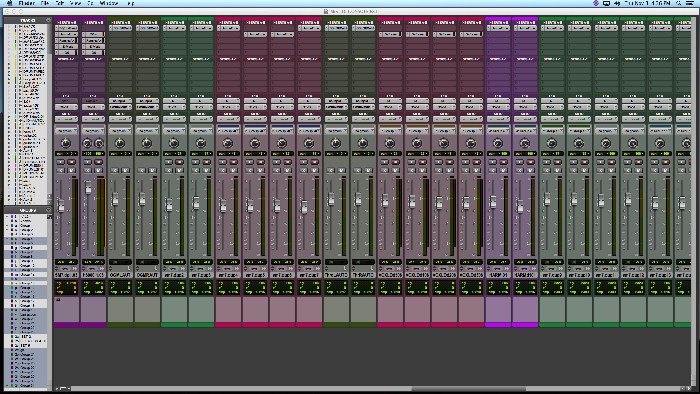
I can’t tell you how many times I’ve gone back to these articles for inspiration. Just awesome stuff!
Thank you!
Ohh that was so great my friend, truly appreciated!
Fantastic stuff, Paul ! Had a blast reading this as well as the original SOS article !